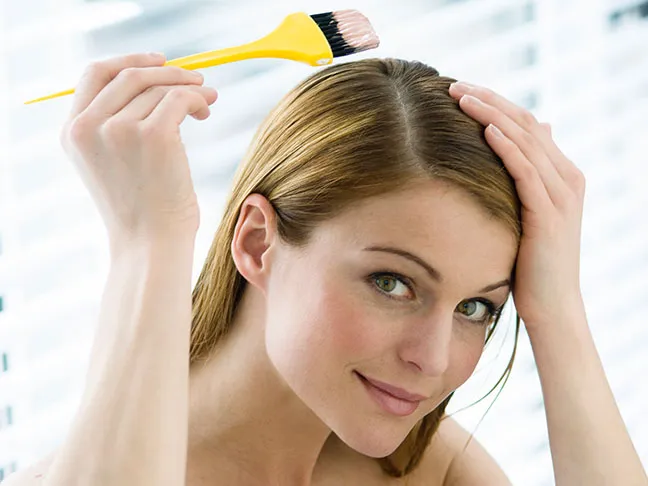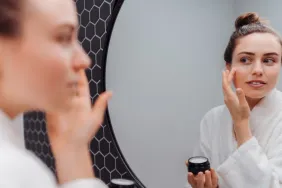Thinking about skipping the salon because you’re strapped for cash and time? At-home hair coloring may be the answer, but not before giving some practical tips a read. Trust me, these do’s and don’ts will save you loads of time, money, and aggravation. As a mom you recognize that preparation is everything – and this definitely holds true for coloring your hair at home. Follow these at home hair color tricks and tips for achieving salon-worthy results.
DO: Prepare For Coloring
Schedule your at-home hair coloring when you are least likely to be interrupted (like when the kids are at school). Wear an old t-shirt and use an old towel (reserved for at-home dye jobs) to avoid ruining items that matter to you. Place a barrier cream (or vaseline) around the perimeter of your hairline so the dye doesn’t stain your skin (this is especially true if your skin is on the dryer side). Use gloves to prevent ruining your manicure or getting color all over your hands. Lastly, section off your hair into four even sections to make coloring easier to manage.
DON’T: Avoid Following Instructions
Try coloring your hair the day after your last shampoo. Avoid applying color dye on hair that is overly dirty or has product on it as these factors may not allow for even color saturation or absorption. Also, do not leave color on for longer than instructed on the box as uneven color may result. A common problem with color that is left on for too long is that it results in hair that is too light at the root (commonly referred to as “hot roots“).
DO: Opt for Semi-Permanent Color
Try semi-permanent hair color versus permanent hair color to avoid a pricey color correcting session at the salon. Semi-permanent color washes out after a few washes but permanent color requires a professional to fix color-gone-wrong.
DON’T: Go Color Crazy
Keep healthy expectations in mind! Avoid going lighter or darker as that typically requires multiple dye jobs across several weeks. Anything drastic may result in color that falls flat (is non-dimensional), or not evenly distributed. Also, damage may occur if opting for a drastic color change at home.
DO: Match Your Best Color
Pay attention to your natural coloring so you choose colors that complement your skin tone. If you have a cool skin tone, for example, avoid colors that lean in that color family as it will make your skin look drab.
DON’T: Select Your Color Based On The Front Of The Box
Pick a color line you trust – ideally from a brand you’ve used before. If you’re prone to allergic reactions or have sensitive skin or scalp, do a patch test first and then stick to that brand if no reaction occurs. Note that the hair color on the model in front of the box isn’t necessarily the color you’ll end up with(due to color you may already have in your hair, etc.). Instead, refer to the before and after color descriptions displayed on the side of the box for a more accurate portrayal of what you may expect to achieve. It’s also important to always use products from the same brand when coloring your hair as they are meant to work and activate appropriately together.
DO: Stay Within Two Shades
Avoid going too dark or too light especially if you want a more natural result. Anything more than one or two shades lighter or darker can be too harsh visually – and chemically. Also, it probably won’t yield in professional-looking results. A drastic departure from your natural color is what usually results in brassy (reddish) tones. Skip unpredictable color results by staying within your color family.
DON’T: Dye Hair That’s Damaged
Avoid dying hair that is damaged as color will not adhere properly and will result in uneven, spotty color distribution and bands of ill-placed color. Hair that is not healthy does not absorb color the way healthy hair does. In addition, further coloring damaged hair may result in extra damage, dryness, breakage, brittleness and unpredictable color results
DO: Pay Attention To Your Roots
If you’re focused on only doing root touch ups, buy products that are specifically designed for that like Root Reboot by Madison Reed. Applying all-over color at the root can cause a band of color that does not blend well with the rest of your color. Best of all, you don’t have to color all of your hair every time you’re in need of a root touch-up. Just color your roots to maintain color or hide greys.
More Hair Tips:
- How to Repair Damaged Hair (Without Cutting It)
- The 10 Best Hair Dryers for At-Home Blowouts
- 5-Minute Braided Top Knot Hair Tutorial








